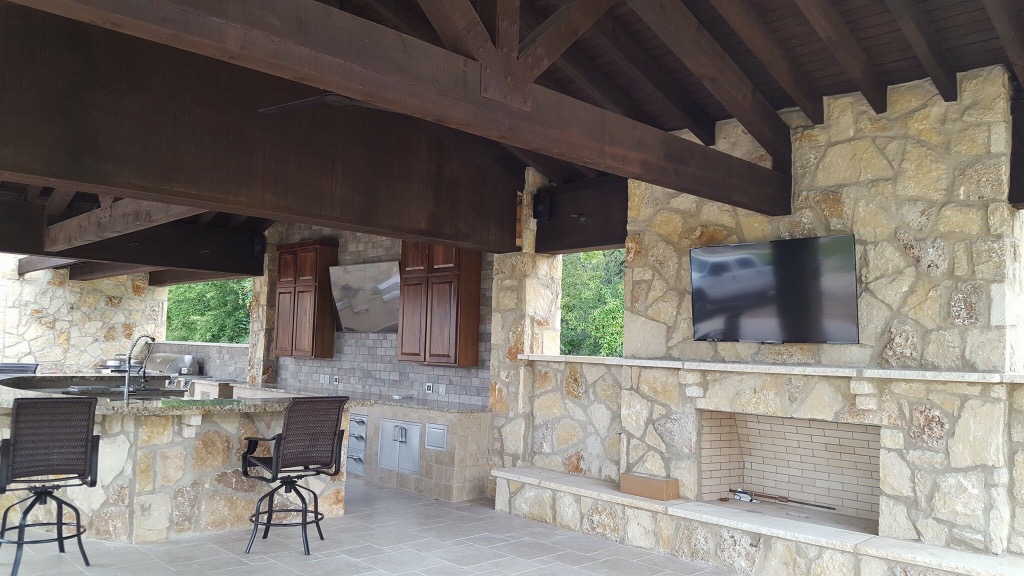There are many different techniques used in masonry work, but overall, there are two main types of stone masonry.
The first type is Rubble Masonry, and there are different subtypes that also fall under this category. If you’d like to read about the second type, Ashlar Masonry, you can find that blog post here!
Rubble masonry utilizes stones that are unpolished and rough around the edges. They come in all different shapes, sizes, and colors and are meant to be mismatching and unique. The rough and unfinished look of rubble masonry gives off a very rustic feel. This is great for those that enjoy old-fashioned styles and designs around the home and outdoor living space.
Like previously mentioned, there are subtypes of rubble masonry: dry, square, and random.
- Dry Rubble Masonry
This style of rubble masonry is considered the most basic subtype. While it’s similar to both square and random masonry, it differs in a large way. No mortar is used for dry rubble masonry. This is accomplished by carefully choosing the right stones to stack on top of each other in a way that avoids any major joints or gaps. This provides stability and allows masons to avoid using mortar to hold the stones together. This is a beautiful look for some structures, though is less often used in major projects since most prefer to have mortar holding the stones together.
- Square Rubble Masonry
While all kinds of rubble masonry are made from rough and unfinished stones, square rubble masonry actually uses stones that have be shaped a bit more to be in square or rectangular shapes. They are shaped either with a chisel or hammer to have squared edges so they can be fit together more easily. They still vastly vary in sizes and shape, though, in that some stones look more like squares and others look more like long rectangles. The stones can either be laid out in rows where they have defined horizontal joints which is called “coursed”, or in random patterns where there’s no defined joints, which is called “uncoursed.”
- Random Rubble Masonry
The shaped stones mentioned in square rubble masonry can be used in random rubble masonry, or regular unfinished stones can be used. They are then placed without any pattern, but with the goal to evenly distribute the weight of the stones evenly to ensure stability.
Like with all sorts of building materials, there are both benefits and downsides to using rubble masonry.
Unfortunately, though the stones are quite heavy duty, cracks can form over time as the rocks settle. This shouldn’t be an issue for quite a while, but it’s known to happen after the rocks have withstood a fair bit of wear and tear. The fix for this is calling up your masonry contractor and having them handle the cracking for you.
Working with the stones used in rubble masonry can be quite time consuming, and this means you might pay a bit more for the work. For some this isn’t an issue, for others it might cause you to think twice before committing to it.
As for the benefits, rubble masonry is extremely strong, and can easily handle bad weather, natural disasters, and the regular wear and tear of aging. The rocks have been known to last lifetimes with how durable they are, so even though there may be period cracking over time, you mostly won’t have to worry about it.
Rubble masonry has a beautiful, rustic charm to it that nothing else can achieve. It’s perfect for those that love rural, vintage design aesthetics and can work great in outdoor spaces for those that live in the country.
It’s great for fire protection since the rocks are so thick, which is why it’s often used on homes. It works great for firepits and fireplaces as well, though, since the rocks can easily withstand the flames and high heat.
Whether you want to utilize our rubble masonry services, or if you have some other project in mind, College Station Covered Porch and Outdoor Kitchens is here to serve! Simply give us a call or fill out the form on our contact page to get in touch with us for your free estimate!


Comments are closed